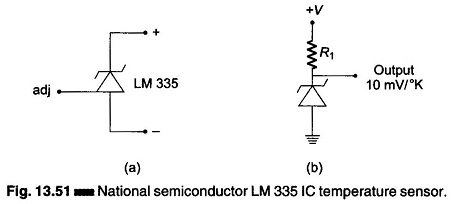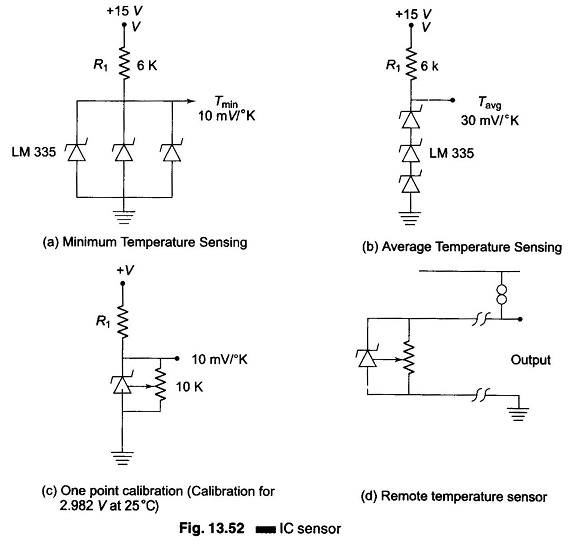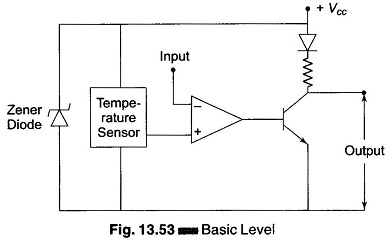LM335 IC Temperature Sensor:
LM335 IC Temperature Sensor – IC sensor produces a voltage or current signal that increases with increase in temperature. It eliminate the linearity errors associated with thermistor. However, being semiconductor devices, they are available in both voltage and current output configuration.
Figure 13.51 shows a National semiconductor LM335 IC. It provides a proportional output of 10 mV/°K. It operates as a two terminal zener. It has a dynamic impedance of less than 1Ω and operates over a current range of 400 μA to 5 mA with virtually no change in performance.
When calibrated at 25 °C, it typically shows less than 1 °C error over a 100° range. Its usable range is -10 °C to +100 °C and LM135 is also available with a range of -55 to 150°C.
The IC sensor can be used as a minimum temperature sensing circuit, as shown in Fig.13.52(a), because of low dynamic impedance of the sensors. The coolest sensor will set the output voltage. The average circuit using IC sensor shown in Fig.13.52(b) will simply add the individual output voltage. A simple potentiometer circuit used along with the IC Sensor provides one point calibration as shown in Fig.13.52(c). The simple point calibration is usually done at the midpoint of the temperature scale. As the output of the IC Sensor LM335 is also available in the form of current source, remote sensing of the temperature using long wire length is also possible as shown in Fig. 13.52(d).
Fabricated on a single monolithic chip, they include a temperature sensor (in the form of a differential pair of transistor), a stable voltage reference and an operational amplifier.
Using the internal Operational Amplifier (op-amp) with external resistors any temperature scale factor is usually obtained. By connecting the op-amp as a voltage comparator, the output will switch as the temperature crosses the set point making the device useful as an Basic on-off temperature controller as shown in Fig.13.53.


